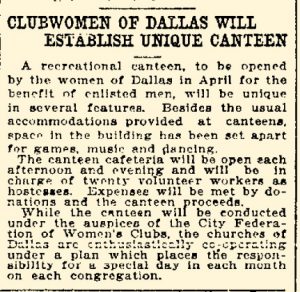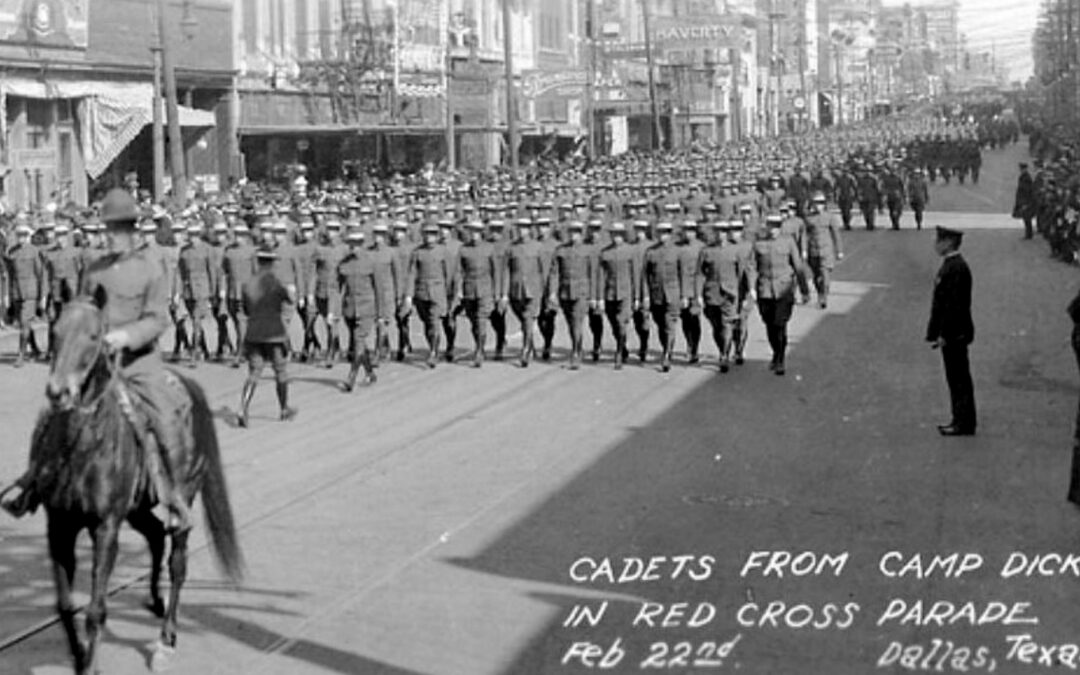Image from Flashback Dallas.
The Dallas Canteen
(officially known as The Recreational Canteen)
Organized In: 1918 by the Dallas Federation of Women’s Clubs
Noted For: Recreation and hospitality service for servicemen passing through Dallas
The U.S. formally entered World War I in 1917, and the following spring, members of the Dallas Federation of Women’s Clubs (many of whom were also involved with the Dallas Equal Suffrage Association) took on the task of funding and organizing a canteen to provide hospitality for servicemen stationed at Camp John Dick, an air service training camp at Fair Park.
The beginning of the war kicked off a period of especially intense activity in the suffrage movement. In Dallas as in other areas, club women were engaging in a hurricane of wartime service, an effort that would soon intersect with the fight for votes for women. Many suffragists leveraged their presence at patriotic community events as opportunities to keep their cause in the public eye. As women’s contributions to the war effort mounted, newspaper editors, lawmakers, and other influencers who supported votes for women began to position voting rights as a “just reward” for women’s wartime service.
The Dallas Canteen…
Officially known as the Recreational Canteen, the ambitious hospitality project was initially operated under the management of the City Federation of Women’s Clubs.
Programs and activities offered to soldiers included meals, baked goods distribution, letter writing assistance, live entertainment, and dancing. Management of the canteen eventually passed to the Dallas War Camp Community Service, but club women continued to provide the canteen with volunteers.

On the left: Item in the Galveston Daily News, April 1918. From the Texas Newspaper Archives.
Although the Dallas Canteen era of the Dallas women’s club movement was short lived, it coincided with many important moments in the local and statewide suffrage campaign.
These included the campaign for state school superintendent Annie Webb Blanton, the first woman elected to state office in Texas; the effort to install pro-suffrage governor William P. Hobby; a petition drive in Dallas that yielded 10,000 signatures and secured the support of an area legislator; and the Dallas component of the historic 17-day drive to register Texas women to vote in the 1918 primary election—. Through vision and determination, Dallas women managed to help pull all of this off in a short period of time, all the while continuing to provide valuable support for the Dallas war effort.
Additional Reading:
“Legacies: A History Journal for Dallas and North Central Texas”
“Women’s Suffrage and WWI” from the National Parks Service

